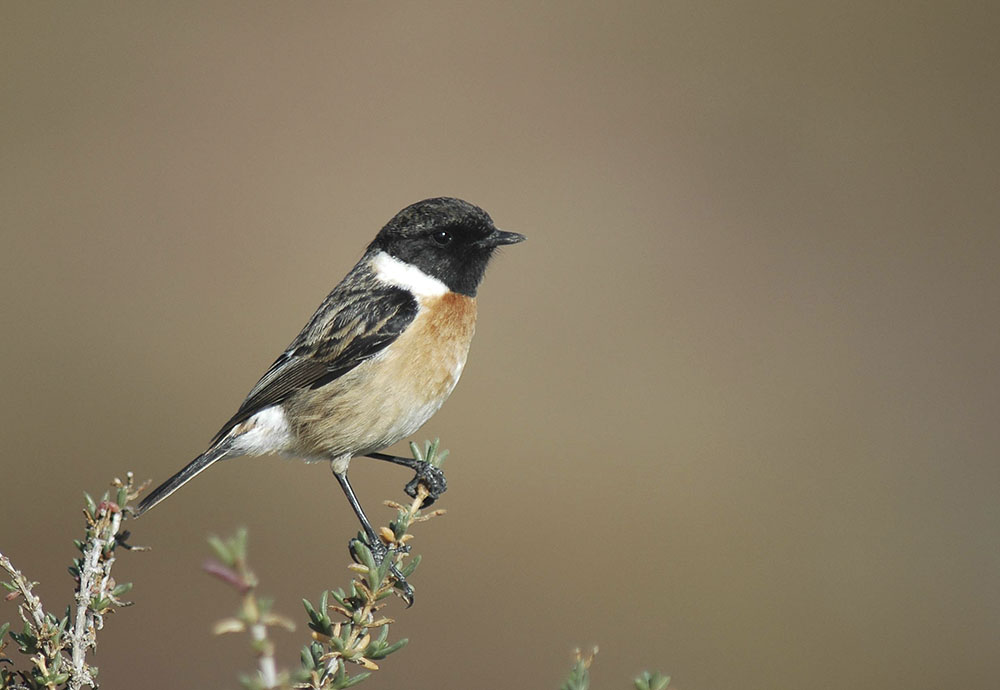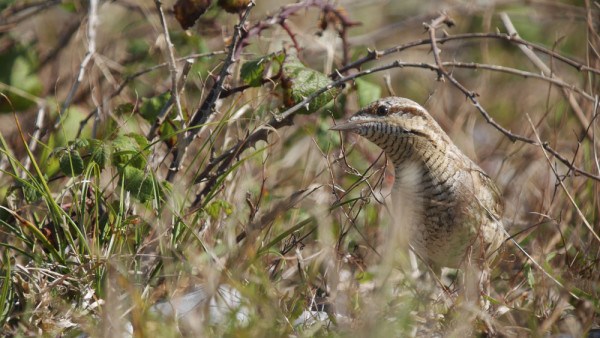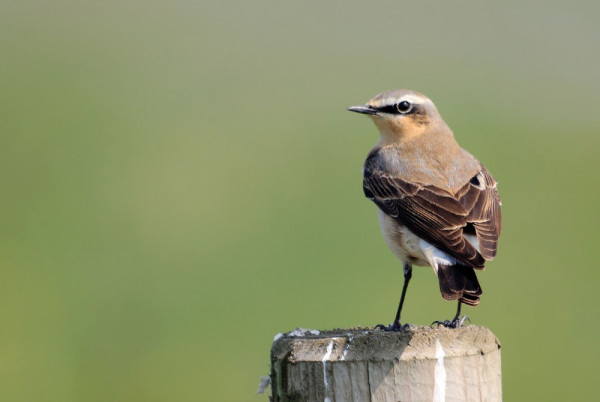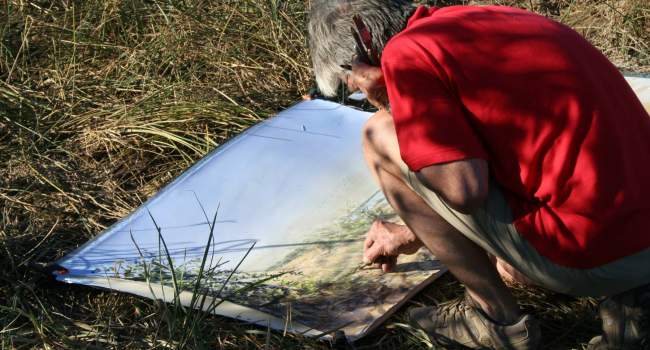
Migration blog (4th – 10th September)
Well, it is officially autumn, and it is as if the weather knows. An almost overnight change for many of us sees colder nights becoming a feature and some locations are even seeing a frost. For the next couple of months, the migration blog will return to a weekly blog as migration intensifies.
Since the last migration blog the intensity of migration has increased as more species either leave for wintering grounds further south, or start arriving here for the forthcoming winter. Some species will simply be using Britain and Ireland as a stop-off on their migration, only stopping to rest up and refuel before continuing their journey. Of these, Sooty Shearwater is a perfect example, a species which breeds on South Atlantic islands and passes here as part of their epic migration. Reports of this master of the waves increased dramatically at the end of August, mainly due to favourable seawatching conditions across many locations. Reports of these will no doubt continue until late September when birds begin to head south past northeastern Africa and back across the equator. Similar increases in reporting rates were seen at the end of August for other seabirds, including Great, Cory’s and Balearic Shearwaters, whilst the reporting rate for Fulmar also took a drastic leap up from a rate of 2.5% on complete lists to over 6.5%. The BirdTrack reporting rates for both Arctic and Long-tailed Skua also saw a big increase during the last week of August, as strong northerly winds pushed birds down North Sea coasts all the way from Moray and Nairn in Scotland to Kent in the South. Terns were a feature of the bank holiday weekend with good numbers of Arctic, Common and Sandwich Terns noted from several sites, and the occasional Black Tern were also seen in these flocks. Wildfowl took advantage of the tailwind with good numbers of Teal, Wigeon, Shoveler and Pintail seen in mixed flocks as they headed south from their northern breeding grounds.
It wasn’t just seabirds that increased during late August; many of the summer visiting warblers saw the expected BirdTrack reporting rate increase. Whitethroat, Lesser Whitethroat, Willow Warbler, and Garden Warbler noted in increasing numbers as adults and this year's young began their autumn migration. Whinchat, Redstart and Wheatear also began to move through in increasing numbers, joined by the occasional Wryneck, Barred Warbler and Red-backed Shrike. Reporting rates for the former are down compared to the historical average. Could this be due to fewer easterly winds, or a sign of a poor breeding season on the continent? We will have to wait and see.
Stand out rarities since the last blog include Brown Booby in Cornwall, Bridled Tern in Devon and an apparent Eleonora’s Falcon in Dorset. The supporting cast of scarcities included a scattering of Citrine Wagtails, Greenish, Arctic, Icterine and Melodious Warblers and the first August record of Yellow-browed Warbler for Britain and Ireland. Could this be an indication of a good autumn for this Siberian sprite?

Species Focus - Wryneck
Wryneck was once a widespread breeding bird in Britain, but underwent a rapid decline in the early 20th century and the last confirmed breeding here was in 2003. However, it is still recorded each spring and autumn as a passage migrant in varying numbers. At these times the Wrynecks recorded here are highly likely to be birds making their way to and from their breeding grounds in Scandinavia, with the numbers encountered each year dependent on the right weather conditions. In the spring a bout of south-easterly airflow in May will almost certainly result in the arrival of Wrynecks here, and conversely, east to northeast winds off the back of a high-pressure system over Scandinavia in the autumn will do the same.
The timing of these winds is key; in the autumn, late August to early September is the best time to catch-up with this cryptic bird. With north-easterlies crossing the North Sea in late August this year a number of Wrynecks have already been seen.
Whilst the majority of Wrynecks will almost certainly be found on the coast and on some of our far-flung islands, during both migration seasons birds are found away from the coast and often in gardens. Like its relative, the Green Woodpecker, ants form an important part of the Wryneck’s diet and as such it spends most of its time feeding on the ground, often only giving away its presence when it moves, so good is its camouflage.
September is a fantastic month for migration and, no matter what the weather conditions, you can always guarantee birds will be migrating.

Looking ahead
The weather for the week ahead is a bit of a mixed bag, which doesn’t at this stage look too promising for producing a great deal of variety in terms of migrants. This coming weekend sees high pressure building from the Azores, bringing with it a westerly airflow for most of Britain and Ireland, whilst a low pressure to the north will drag in cooler winds from Iceland for Scotland and northeastern England. These conditions will have the effect of keeping migrants on the near-continent rather than pushing them across the North sea as an easterly airflow would. The north-easterlies in Scotland and the northeast of England could see the arrival of Bar-tailed and Black-tailed Godwit, Knot and Sanderling. Both Pink-footed and Pale-bellied Brent Geese could also use these winds to give them a helping hand as the first birds head to Britain and Ireland for the winter.
Early next week high pressure continues to build across much of Britain and Ireland, with the predominate wind direction coming from the southwest, a direction not ideal at this time of year for migration. But if the winds are light enough birds should still be on the move. Both Meadow Pipit and Siskin will start to move in increasing numbers and can even migrate in stronger headwinds. Early mornings are the best time to witness flocks passing overhead. As we progress through the week high pressure building in the north Atlantic pulls in winds from Greenland and Canada; this could result in an arrival of the Greenland race of Wheatear, a species that undertakes a truly epic migration, sometimes flying non-stop from Greenland to Britain and Ireland. Their bulkier size and longer wings help you distinguish them from the European race birds. These westerlies could also produce a scattering of American waders, with Pectoral, Buff-breasted, Least and Semipalmated Sandpipers all likely species, and maybe even an American passerine such as Yellow Warbler, American Redstart or a Northern Waterthrush. September is a fantastic month for migration and, no matter what the weather conditions, you can always guarantee birds will be migrating. This can be seen not only at coastal migration hotspots, but anywhere, be that your garden or local green-space. Warbler numbers will continue to build and some birds of prey like Osprey or even Honey-buzzard could pass over the most unlikely locations.
BTO satellite tagged Cuckoos
While many birds are in the process of preparing to begin their migration south, our three tagged Cuckoos are well on their way. Two of them, Valentine and PJ, are already south of the Sahara Desert and making their way east to the wintering areas in and around the Congo basin, while Carlton II has just left northeast Spain. Around 10:30pm on 1 September he was just off the coast adjacent to the Spanish/Portuguese border and around 11 miles offshore – at the time there was a strong north/north-easterly wind.
From the information we received from his tag it looks like he carried on in a south-westerly direction over the Atlantic until we next heard from his tag at around 6:00pm on 2 September, when he was 119 miles west of Agadir and the Moroccan coast. When we last heard from his tag, around 8:00pm on the same evening, he was 88 miles further south and just 48 miles from the Moroccan coast. When we next hear from his tag, hopefully he will have made landfall somewhere near the Moroccan/Western Sahara border. You can follow all the Cuckoos at www.bto.org/cuckoos.







Share this page